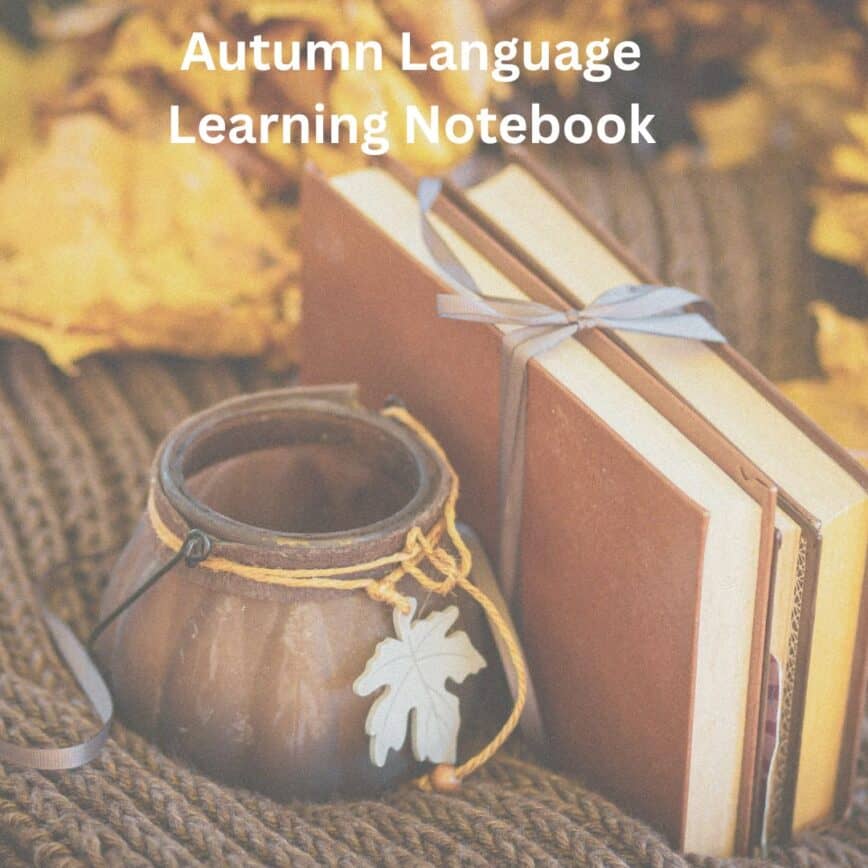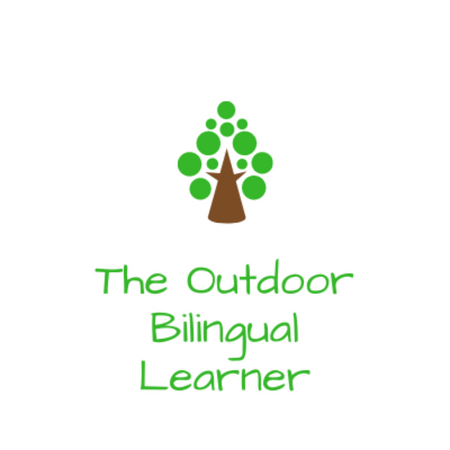
Let’s have a look at ‘How to use Your language learning Notebook in Autumn‘.
As you know if you have read previous blog posts I love language learning notebooks, as it is not just a workbook, it is a space for discovery, creativity, and connection. Not just with the language that your child is learning but also with nature. The language learning notebook becomes really special when it’s inspired through the changing of the seasons.
For those of you that are new here, check out my other blog posts about creating and using a language learning notebook – read here
What Is An Autumn Language Learning Notebook?
An autumn language learning notebook is a journal where children can collect new words, drawings and memories from their language learning journey.
Unlike using worksheets, the journal grows with your child – page by page.
It can include:
- Vocabulary lists
- Simple sentences (which you know are a really big thing for me!)
- Nature journaling pages
- Autumn poems
- Collages in english and german (or in the language that you are learning)
For me it is NOT about correct spelling (apart from the Vocabulary lists), it’s about getting your child to express themselves in the language that they are learning and making the language more visible and meaningful to them – which encourages learning and retainment.
The Autumn Notebook
If you look out of your window now at the autumn views, what do you see? I see colours and textures and for me Autumn has this smell in the air and a sense of peace I cannot quite describe.
When looking at that in terms of the language learning notebook children can glue their treasures from nature walks, draw pictures and label items in the languages of their learning, by doing this words become real.
Page Ideas
My Autumn Word Tree – can be seen here on my instagram page
Take a blank page and draw a very basic tree on it, and at the end of each branch write a new english word related to autumn, you can also add stickers or small drawings to each branch.
(The focus here is about Vocabulary and spelling)
Nature Collection Page
Glue in some leaves and note from which type of tree they came from, label it in english. Also use short sentences such as:
- This leaf is orange
- It is small and smooth
(The focus here is about describing words and observation)
Weather Watch
Children can make notes about the weather using simple sentences and weather symbols.
- Today it is windy.
- It is raining. (It’s raining)
- The sun is shining
- It is warm out today.
(Focus here is present tense and daily vocabulary)
My Autumn Adventure
Write or draw (depending on the childs age) about a nature walk, forest outing or a pony ride (this is definitely us).
Add a few english short sentences such as:
- I went riding in the forest.
- We spotted some mushrooms and birds.
You could also take some pictures on the way, or do a bark rubbing or leaf print to add to the adventure.
(Focus here is story telling and memory building)
Autumn Feelings Page
This page can be used to encourage children to express their emotions using colours and words.
- I feel happy when I jump in the leaves.
- I feel calm when I watch the rain.
(Focus here is sentence structure and emotional vocabulary)
Take a look at my Pinterest board for more Language Learning notebook ideas. https://at.pinterest.com/outdoor_bilingual_learner/language-learning-with-notebooks/
Tips for Parents and Homeschoolers
- Keep it short – 10/15 Minutes a couple of times a week
- Encourage creativity and ownership
- Go outside first, enjoy and collect memories, then come back in to reflect in the notebook
- It’s all about effort and NOT perfection!
- Keep the pages together – it’s a treasure to look at later.
Conclusion
The language learning notebook is not just a tool – it’s a keepsake for your childs language learning journey.
Autumn is the perfect time of year to start, not because of the school/homeschooling year plan but because Autumn gives you the perfect opportunity to look at colours and natures beauty. Take time after your walks to sit together with either a pot of tea (definitely my way) or a hot chocolate and let the learning unfold naturally through conversation and drawing.
The most important thing is that learning remains fun and to enjoy your time outside and for not to think of this as a chore!!
Warm hugs from the field,
Rachel – The Outdoor Bilingual Learner


